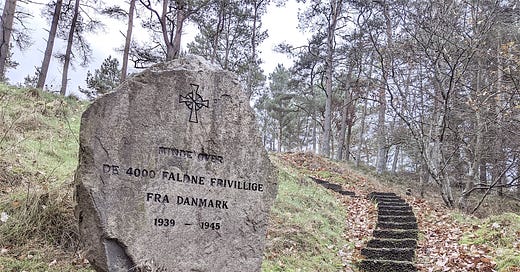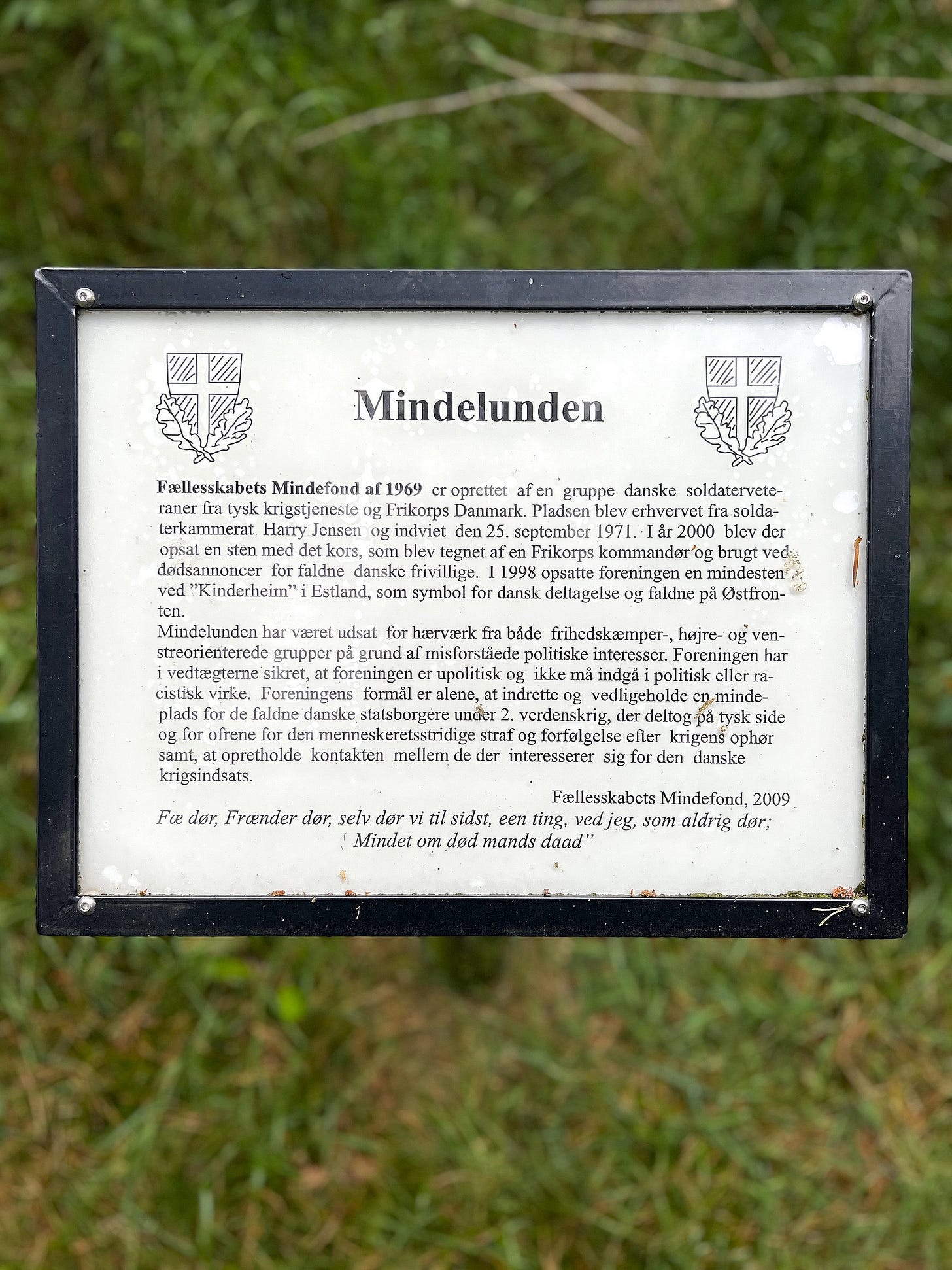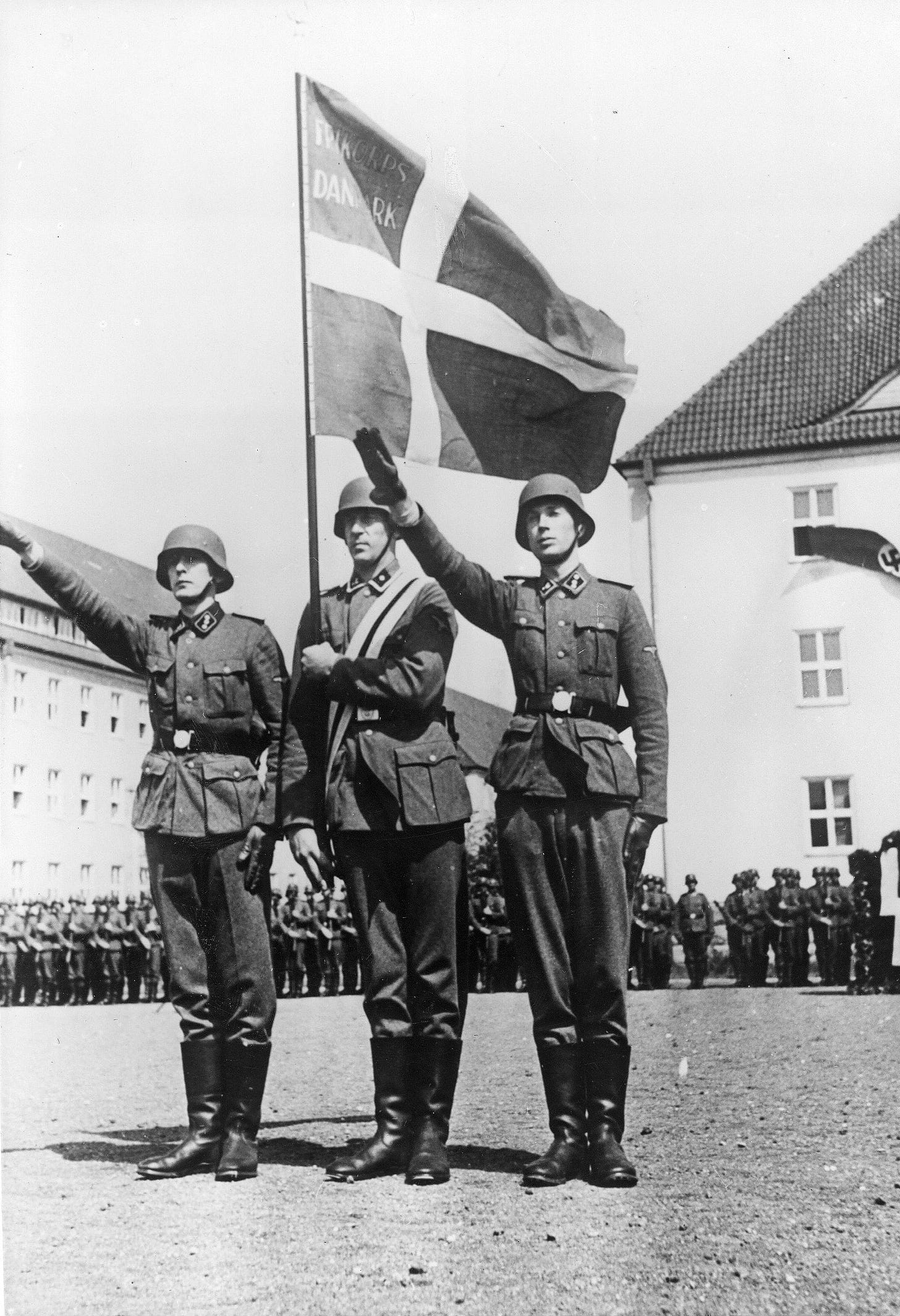GREETINGS from Denmark, where I have spent the best part of a week being kindly hosted by the legendary TV presenter Peter Ingemann and his wife, Trine. My reason for visiting was to celebrate the launch of a fantastic new series presented by Peter about Hitler, Stalin, and Churchill, for which I had oh-so-reluctantly travelled to Bavaria to help with the sections about Hitler. This largely seemed to involve drinking large amounts of beer and eating vast, pale sausages, but there it is.
But as well as celebrating the new series, Peter – who is an enormous history buff – took me to see some historic sites near his home in Jutland. One of them was a place called Jelling, which is little known to many outside Denmark, but is the site of two ancient stones from the 10th century that are seen as the literal foundation stones of Denmark as a country.
The other place was called Mindelunden, and it was, er, just a little bit more controversial. For in a clearing on the edge of a wood just off a main road is a stone that is dedicated to the 4,000 men from Denmark who died fighting for Hitler during the Second World War, most of whom were members of the Waffen-SS.
Ever since the land was acquired in 1971, and the stone erected in 2000, the site has been vandalised by those who see it as glorifying Nazism. The association behind the memorial denies this, and states, on a small plaque, that ‘the sole purpose of the association is to set up and maintain a memorial site for the fallen Danish soldiers during the Second World War who took part on the German side, and for the victims of the inhumane punishment and persecution after the end of the war’.
Back in August, the deputy mayor of the local Silkeborg municipality, Johan Brødsgaard, had decided that enough was enough, and even though the site was privately-owned, he thought that the stone should go.
“I don't think that in our municipality we should have a memorial stone for people who fought on the side of the Germans,” he said. “I don't think it's right, neither morally nor historically.”
However, by September, Mr Brødsgaard had abandoned his plan, as he was unable to summon up a majority of local officials to seek to remove the stone. For the time being then, the stone is safe.
But should it be?
For those whose countries were unoccupied by the Nazis, the whole question of collaboration is a morally simple issue to resolve. Collaboration with an evil regime is bad, and that’s the end of it. That’s an understandable position to take, and on the surface, you can’t argue with it.
But let’s chuck in a few curved balls:
What if you had an implacable hatred of Communism and wanted to do your bit to fight the peril of Bolshevism?
What if you felt – perhaps for familial or geographic reasons – an allegiance or kinship to Germany, even if you weren’t technically German?
Would it make you feel more comfortable to know that your government had willingly signed the Anti-Comintern Pact, and had allowed members of its armed forces to join the Waffen-SS at the same rank as they already held?
Would you feel happier knowing that you would never be fighting your fellow countrymen, but only against the Red Army?
These were the questions faced by the those Danes who volunteered for the SS, and some 6,000 did so – while 13,000 in total were accused of collaborating with the Nazis.
What I am emphatically not doing is to exculpate those who joined the SS, but merely seeking to understand why some chose to do so. It should be stressed that many were indeed fascists, and some, especially those who joined the notorious Schalburg Corps, were particularly nasty individuals indeed. After the war, many who had fought for the SS were hanged or imprisoned, an act of vengeance that some – such as the association behind the Mindelunden memorial – regard as being hypocritical, not least because the Danish government had given permission for its citizens to join the Germans.
I have mixed feelings about the stone. Were it in a more public space – such as in the middle of a big city or indeed next to the stones at Jelling – then I would regard it as being inflammatory and that it should be removed. Were it to be festooned with swastikas and to attract hordes of neo-Nazis, then again, I would adopt the position of Mr Brødsgaard.
But as the stone is in such an obscure and unsigned location, it is somehow both public and hidden, and that neatly encapsulates the whole issue of memorialising collaboration and the darker side of a country’s history. Although I don’t buy the idea that toppling statues and memorials necessarily topples history, I can’t help but feel that removing this stone would ultimately be an act of whitewashing.
Do I suspect that the association behind the memorial is being disingenuous when it claims not to be glorifying Nazism? I do. But if taken as it stands, it does act as a semi-hidden reminder of the moral complexities that arise when occupied. All countries collaborated – and all countries would – and that should always be remembered.
(Erratum: I received the following email from a Danish correspondent who has rightly corrected me about the fates of those Danes who fought for Hitler:
"I have to draw your attention to two errors in your otherwise fine article.
1. There were 46 executions carried out in Denmark after the Liberation. These were, as far as I know, all carried out by firing squads selected from volunteering police officers. No one was hanged.
2. None of those executed, were executed solely for being members of the SS. None of them were executed for any crimes committed outside Denmark.
Danish Wikipedia article with list of those executed for crimes committed during the occupation.
To my knowledge not a single Danish SS volunteer was convicted of any of those war crimes the Danish units committed in either Croatia, Belarus, Russia or Ukraine.)






As the historian Richard Holmes we (the UK) weren’t occupied and thus faced a different challenge, that of staying the course. We did not face the significant challenges of occupation, to collaborate/ cooperate, so we need to be careful when we comment. Having said all of that, without a doubt that memorial should be removed. The entire Wehrmacht fought for the victory of a regime who perpetrated the Holocaust; Heer, Luftwaffe, Kriegsmarine, the SS, and if you were from an occupied nation that should not be commemorated in any form. Mind you the howling gale blowing me off Mount Pious is the war grave at Cannockchase, the solitary German flyer buried near me with headstone clearly provided by the CWGC, and the VDK to whom I’ve made a couple of donations. This is complicated.
This is a good and thoughtful piece of writing, not least because there's an attempt to understand why people in the past did what they did, rather than simply pass judgement on them. I have mixed feelings about this stone, too - I can see why it would be hugely offensive to many, but also why decent people might e.g. want to see this facet of their own experience, or their own family experience, commemorated. And you're right that the stone, which is fairly low key, draws attention to a set of moral complexities to which those who lived in the UK or US were, thankfully, never asked to confront directly. On balance, I think I'd keep it, if only for the reasons you set out very eloquently in the two last paragraphs above.